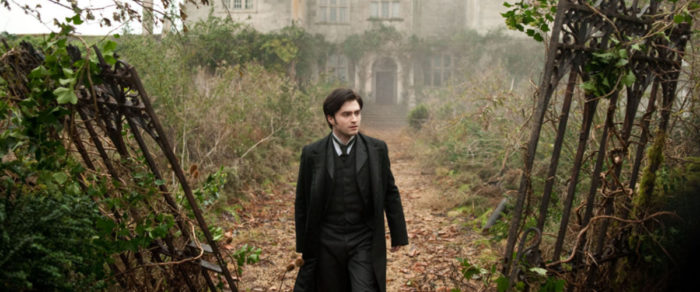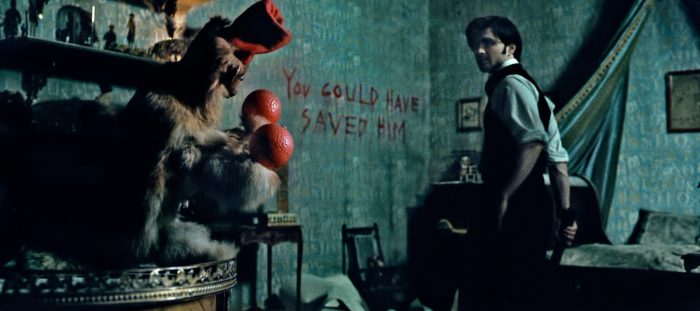
Grief is a tricky subject to depict onscreen, and yet it tends to pop up in horror movies quite a bit. Maybe this is because in horror movies there isn’t this preconceived notion of handling grief “tastefully”, and so movies in the genre can go a little nuts with turning their screws into the audience and their own personal relationship with death and grieving. Whatever the case, The Woman In Black does a good job of not making grief feel completely trivial, but also of amping up all the bad vibes surrounding ghosts and dead loved ones into something that constantly keeps you on edge.
Fresh off of concluding the Harry Potter series, Daniel Radcliffe plays Arthur Kipps, a lawyer whose wife died giving birth to their only son. Kipps leaves his son with a nanny to go investigate the Eel Marsh house, a soon-to-be-sold estate where its owners died under mysterious circumstances. Kipps finds that many of the locals aren’t to keen about him snooping around the town, though he finds a friend in a wealthy landowner named Samuel Daily (played by Ciarán Hinds).
After Kipps’ legal contact tries to get him to leave town, he nonetheless finds a way to Eel Marsh, while also finding that the house has a haunted air about it. He finds a bunch of creaky noises and objects in the house, as well as children’s voices, before he sees a passing vision of the titular woman in black. After he returns to town, one of the children living there dies, while we learn that several other children have died in the village after someone has spotted this spectral woman, including Mr. Daily. Though the villagers blame the child’s death on Kipps, he’s nonetheless determined to solve whatever’s going on at this house by spending a night in it.
What happens from there is one of the more unnerving sequences I’ve seen in any recent horror movies. It’s hard to pin down what exactly makes it so scary, since it is more or less Daniel Radcliffe just walking around a dusty Victorian mansion while constantly being spooked by creepy dolls and screaming ghost moms. But the house itself is a fantastic set, and the way the movie embodies a kind of calm and stillness that could only come from another, quieter era. Which makes it all the scarier when something jumps out from one of the house’s creaky corners.
That said, there was a part of me that couldn’t help but question why this needed to be a period piece. After all, a spooky house filled with old-timey relics could still exist today, and it’s not like ghosts are beholden to any particular time period. Though, I suppose the way the movie has the audience (and Kipps) piece the mystery of the Eel Marsh house together through letters and sepia-toned photos is a lot creepier than say, texts and videos. Also, as John pointed out in his original review, this is a Hammer-produced horror movie, so it’s probably a prerequisite that it have that gothic flair to it.
I also suspect the movie might be set around the turn of the 20th century, because otherwise, it might not have that much going for it to distinguish itself. It’s a pretty economical horror movie, giving you just enough scares to constantly keep you guessing, while also making full use of the few sets and characters at its disposal. Also, most of the plot elements are pretty standard horror fare, and yet the movie uses them in just the right ways in this morbid story about dead children. Then on top of that, you’ve got an ending that’s oddly poignant, despite it being your typical ending where everybody dies.


